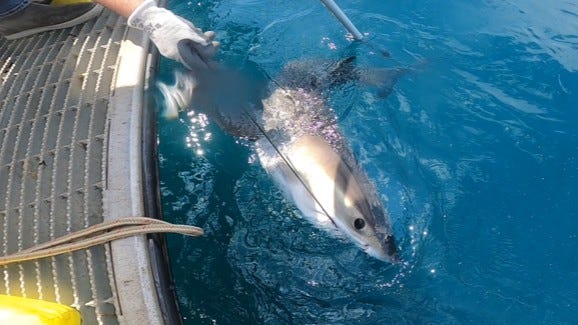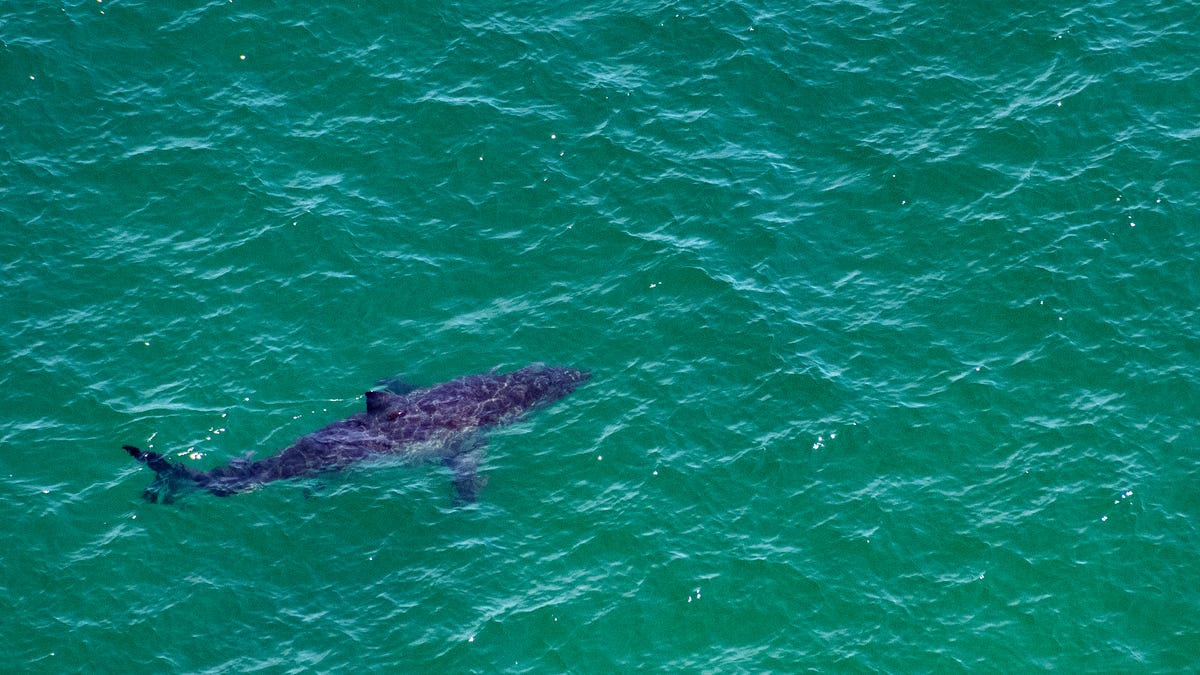
Sharks are due for an image makeover
Researchers at the University of Delaware are equipping sharks with tech that they hope will help forecasters better predict hurricanes.
The largest great white shark tagged, sampled and released by OCEARCH, a nonprofit organization that studies sharks, sent in a “rare ping” for the first time since July.
Researchers at OCEARCH received the location of the massive 13-foot, 9-inch, 1,653-pound great white called Contender on Sept. 29, the first ping since July 18.
In just two months, Contender traveled from off the shore of Cape Cod, Massachusetts, to the Gulf of St. Lawrence, northeast of Anticosta Island, Canada, covering at least 857 miles, John Tyminski, a senior data scientist for the project, stated in a video posted to Instagram. OCEARCH doesn’t usually receive tags from that region.
“Although we have tagged and released a number of sharks as part of this project, animals of adult size have proven elusive,” said Dr. Harley Newton, OCEARCH’s chief scientist and veterinarian. “Male white sharks are mature at around 11.5 feet and 26 years of age, so Contender at nearly 14 feet is an adult male probably in his early 30’s and early in his reproductive life.”
“He is an important part of the effective breeding population and will hopefully contribute to the rebuilding of the western North Atlantic white shark population.”
Contender was tagged in January offshore of the Florida-Georgia border.
Why did the shark travel so far?
The shark most likely traveled up to the Gulf of St. Lawrence because there there is prey, such as harbor and grey seals, as well as schools of fish, in the area, according to Tyminski.
While it isn’t unusual for sharks to move up to the Gulf of St. Lawrence at this time of year, they don’t usually move to the area where Contender is located, the researcher said.
How far has the shark traveled since he was tagged?
Since being tagged on Jan. 17, Contender has traveled 3,119.9 miles over 266 days, according to the OCEARCH Shark Tracker app.

Sharks could help predict hurricanes
Researchers at the University of Delaware and hoping that sharks equipped with sensor tags can help forecasters better predict hurricanes.
How to tracking Contender, other sharks
People interested in tracking sharks like Contender and others tagged by OCEARCH can download the nonprofit’s shark-tracking app, OCEARCH Shark Tracker, through the Apple Store and Google Play.
This article has been updated with new information.
Julia is a Trending reporter for USA TODAY and covers scientific studies and trending news. Connect with her on LinkedIn, X, Instagram, and TikTok: @juliamariegz, or email her at jgomez@gannett.com

